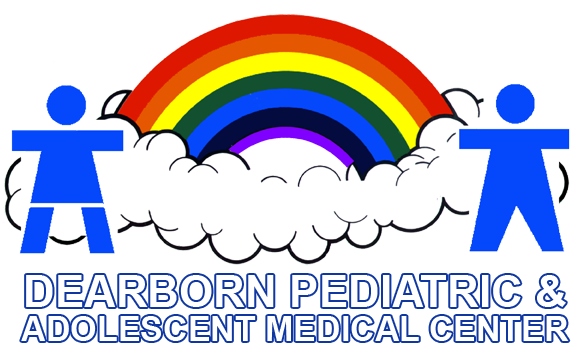
Obesity & Healthy Diet
 Just as modern medicine is conquering diseases like deadly viruses and some cancers, another epidemic has developed that’s harder to cure than almost any other. This epidemic affects more than one third of the children and adolescents in America. Obesity in children has become one of the greatest health concerns. The number of overweight and obese children has nearly doubled in the last generation. There is no medicine proven to remedy the problem.
Just as modern medicine is conquering diseases like deadly viruses and some cancers, another epidemic has developed that’s harder to cure than almost any other. This epidemic affects more than one third of the children and adolescents in America. Obesity in children has become one of the greatest health concerns. The number of overweight and obese children has nearly doubled in the last generation. There is no medicine proven to remedy the problem.
To figure out if someone is at a healthy weight, the individual’s body mass index (BMI) will be calculated, which measures the percentage of body fat using a height to weight comparison. This comparison is the major component to classify someone as overweight or obese.
- Underweight –under 18.5
- Normal –18.5 – 24.9
- Overweight –25.0 – 29.9
- Obese –30.0 or greater
- Class 1 – Obese – 30.0 – 34.9
- Class 2 – Severely Obese – 35.0 – 39.9
- Class 3 – Morbidly Obese – 40.0 or greater
The causes of obesity can be very complex.
- Prenatal overeating – Expectant mothers who gain an excessive amount of weight during pregnancy are very likely to have children who later become obese.
- Bottle feeding – Breast fed babies tend to be slimmer on the average than bottle fed babies.
- Genetics – The children of overweight or obese parents will generally weigh more than their peers. Whether this is because of genetics or family eating habits is not yet clear. Native American, African American, or Hawaiian children are at a greater risk of becoming obese.
- Physical activity – We are in the age of technology. Children tend to stay sedentary while being focused on technology rather than being active. Studies have found that for each hour of outdoor play per day, the chances of a child becoming obese is decreased by 10%.
- Diet – The amount of fat consumed by American children has actually decreased, but the amount of carbohydrates – sugars and starch – has increased. Sweetened cereals, bread, potatoes, and desserts are all heavily represented in the diets of American children. Sweetened drinks like sodas and most fruit juices add calories without any nutritional value. In addition, picking up fast food instead of cooking a meal may save time, but not calories.
- Hormonal imbalance – This is actually a rare cause for obesity. Thyroid, adrenal, or pituitary problems can cause obesity and need to be checked. The likelihood of finding abnormalities, however, is small.
Chubby children used to be considered healthy a few generations ago. Not any longer. Overweight children tend to become overweight adults. Obese children tend to become obese adults. As long as children remain overweight, they are very likely to develop consequences.
- Diabetes – Type II diabetes is the most common.
- Hypertension – Blood pressure elevations can often be seen in pre-adolescents.
- Cholesterol and triglyceride elevations – Lipid abnormalities tend to lead to early arteriosclerosis, which causes heart disease.
- Joint problems – Knees, especially, tend to deteriorate with excessive weight.
- Gout and gallstones – These are becoming more common.
- Psychological consequences – Body image is extremely important to adolescents. Overweight and obese children usually see themselves as unattractive, which can lead to depression and low self-esteem.
The best way to handle obesity in children is to prevent it.
- Pregnant women must be cautious about what and how much they eat and keep to a healthy diet.
- Breast feeding babies is best for the infant, but we understand not every mother can breast feed.
- Keeping children on a healthy diet with lots of fruits and vegetables with very few sweets and fatty foods will help insure that their dietary habits will remain healthy throughout their lives.
- Limit the time they are allowed to watch TV or playing computer games. Encourage any kind of physical activity, especially outside play.
What is a healthy diet?
- High in protein – Fish and poultry are best, but lean meats, eggs, and nuts are all high in protein for growing muscles.
- Fruits and vegetables – Introducing vegetables first to your baby’s diet and fruits later on gives them a chance to actually like veggies. Encourage salads and raw vegetable snacks, such as carrots and celery. Vegetables and fruits provide roughage to prevent constipation and they also contain vitamins and minerals essential to growing bodies.
- High fiber starches – Use wheat or multi-grain bread, brown rice instead of white, and leave potato skins on when you cook.
- Limit simple sugars – Use fruit for dessert as much as possible. Encourage them to drink milk, but limit it to skim or 1%.
- Water – Drinks should be water or milk. Stay away from sodas and fruit juice.
- Home cooked meals – Avoid fast food. Eating out should be for special occasions. Also, be careful about the size of portions.
Once a child is overweight, dieting becomes an unpleasant way of life. Prevention is a lot easier, but the same diet for prevention can help those children who are overweight to lose pounds. Discussing how to add foods for your baby, the proper diet for each age, and how to get your child to lose weight are topics you can discuss with Dr. Fakih and her team. They will be able to help you find the best way to keep your children at a healthy weight.
Dearborn Pediatric & Adolescent Medical Center
2547 Monroe St
Dearborn, MI 48124
Phone: (313) 791-8300
Fax: (313) 791-8302
Email: info@dearbornpediatric.com
Hours
Monday - Friday 9:00AM - 5:00PM
By Appointment Only NO WALK-INS
